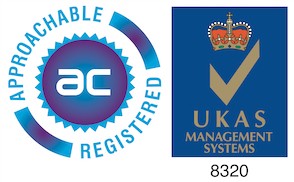Age Verification vs. Age Assurance: Understanding the Differences in Online Safety
As online platforms increasingly cater to users of all ages, ensuring that age-restricted content or services are accessed only by appropriate audiences has become a priority. Two terms often used in this context are age verification and age assurance. While they may sound similar, they serve distinct purposes and involve different methods. Let’s explore these concepts, their applications, and why they matter in today’s digital landscape.
What is Age Verification?
Age verification is a process designed to confirm an individual’s exact age or ensure that they meet a specific legal threshold (e.g., 18+ for alcohol or tobacco purchases). It is typically used to comply with legal requirements or industry standards.
Common Methods:
- Hard Identifiers: Government-issued IDs like passports or driver’s licenses.
- Credit Card Checks: Using payment methods restricted to adults.
- Digital ID Systems: Uploading official documents online for verification.
Pros:
- Provides robust and legally recognized confirmation of age.
- Ensures compliance with strict regulatory requirements.
Cons:
- It can be cumbersome for users, potentially disrupting their experience.
- Raises privacy concerns due to the sensitive nature of personal data collected.
What is Age Assurance?
Age assurance is a broader concept that includes both age verification and age estimation. Instead of confirming an exact age, it focuses on assessing whether a user falls within a particular age range or meets the minimum required age for accessing certain content or services.
Common Methods:
- Ai-Based Age Estimation: Using facial recognition or behavioural analysis to estimate age.
- Self-Declaration: Users input their age (although this method is less reliable).
- Tokenised Age Checks: Verifying age through third-party systems without revealing personal data.
- Behavioural Profiling: Analysing user behaviour to infer their likely age group.
Pros:
- Offers flexibility and scalability for platforms catering to diverse user bases.
- Reduces the need to collect sensitive personal data, aligning with privacy laws like GDPR.
Cons:
- It is less precise than age verification; accuracy depends on the method used.
- It may require additional safeguards to prevent circumvention by tech-savvy users.
Key Differences Between Age Verification and Age Assurance
| Feature | Age Verification | Age Assurance |
|---|---|---|
| Purpose | Confirm the exact age or legal threshold. | Estimates age range or compliance |
| Methods Used | Hard identifiers, credit cards | AI, biometrics, behavioural profiling |
| Accuracy | High | Varies depending on the method |
| Privacy Concerns | Higher due to sensitive data | Lower with tokenised or anonymized methods. |
| User Experience | Can be intrusive | Generally more seamless |
Why does it matter in 2025?
The rise of regulations like the UK’s Online Safety Act, the EU’s Digital Services Act, and global frameworks such as the UNCRC (United Nations Convention on the Rights of the Child) has made it imperative for online platforms to adopt robust measures to protect children and comply with legal standards.
Key Considerations:
- Regulatory Compliance: Platforms must use appropriate methods based on risk levels. For example, high-risk services may require stricter age verification methods.
- Privacy Laws: Solutions must adhere to GDPR principles like data minimization and security.
- User Experience: Striking a balance between robust checks and seamless usability is critical for retaining customers.
Choosing the Right Approach
The choice between age verification and age assurance depends on several factors:
- Risk Level of Content/Service: High-risk platforms (e.g., selling alcohol or tobacco) may require precise verification methods, while low-risk platforms can use estimation techniques.
- User Demographics: Platforms targeting children must prioritize non-intrusive yet effective assurance methods to align with child protection laws.
- Technological Feasibility: AI-based solutions are evolving rapidly and may offer scalable alternatives for large platforms.
Conclusion
Both age verification and age assurance play vital roles in ensuring online safety and compliance with legal standards. While age verification provides certainty for high-risk scenarios, age assurance offers flexibility for broader applications where exact precision is less critical. As technology advances, businesses must stay informed about regulatory changes and emerging tools to implement effective, privacy-conscious, and user-friendly solutions. By understanding these differences, online platforms can better navigate the complexities of digital safety while fostering trust among their users. Whether you’re selling alcohol or tobacco or providing child-friendly content, adopting the right approach ensures both compliance and a positive user experience in today’s regulated digital world.









